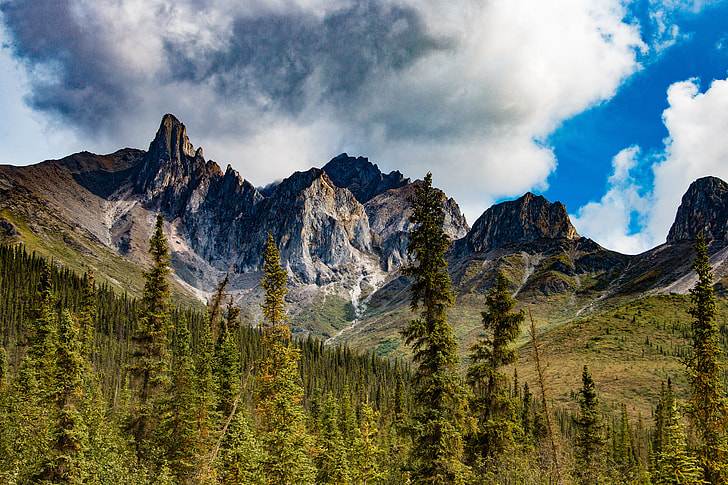
Exploring the Majesty of the Rocky Mountains Range
Introduction
The Rocky Mountains, often referred to as the Rockies, form one of the most iconic mountain ranges in North America, stretching approximately 3,000 miles from New Mexico in the southwestern United States to British Columbia in Canada. This colossal mountain range is a geological wonder, boasting breathtaking landscapes, diverse ecosystems, and a rich cultural history. In this article, we will delve into the rank and significance of the Rocky Mountains, exploring their geological origins, ecological diversity, and the recreational opportunities they provide.
Rocky Mountains Range Geological Origins
The Rocky Mountains, like many mountain ranges, owe their existence to the complex dance of tectonic plates beneath the Earth’s surface. The Rockies began to take shape around 50 million years ago during the Laramide Orogeny, a period of intense mountain-building activity. The collision of the North American and Pacific tectonic plates resulted in the uplift of the Earth’s crust, giving birth to the majestic peaks that characterize the Rocky Mountains.
The region’s unique geology is further highlighted by the presence of sedimentary, metamorphic, and igneous rocks. The diverse rock formations tell a geological story that spans millions of years, making the Rockies a treasure trove for geologists and earth science enthusiasts. Granite peaks, towering cliffs, and deep canyons showcase the geological complexity of the region, making it a paradise for those seeking to unravel the Earth’s history.
Ecological Diversity
The Rocky Mountains range are a haven for biodiversity, hosting a wide range of ecosystems that vary with elevation and climate. As you ascend the mountains, you traverse different ecological zones, each with its own distinct flora and fauna. The foothills are covered in grasslands and shrublands, providing habitat for mule deer, elk, and pronghorn. Moving upward, the montane zone features dense forests dominated by conifers like pine and spruce, offering refuge to black bears, moose, and a variety of bird species.

Above the tree line, where elevations reach extreme heights, lies the alpine tundra. Here, the harsh conditions limit plant life to hardy, low-lying species adapted to the cold and windy environment. Pika, marmots, and mountain goats are among the few animals that thrive in this challenging ecosystem. The Rockies, therefore, serve as a vertical tapestry of life, showcasing the resilience and adaptability of numerous species to diverse environmental conditions.
Notably, the Rocky Mountains are home to several endangered and threatened species, including the lynx, wolverine, and the iconic grizzly bear. Conservation efforts in the region aim to protect these vulnerable species and their habitats, recognizing the importance of preserving the Rockies‘ ecological integrity.
Recreational Opportunities
Beyond their geological and ecological significance, the Rocky Mountains are a playground for outdoor enthusiasts, offering a myriad of recreational activities throughout the year. In the winter, the Rockies transform into a winter wonderland, attracting skiers and snowboarders to world-renowned resorts such as Aspen, Vail, and Banff. The crisp mountain air and powdery snow create an ideal setting for winter sports, making the Rockies a mecca for those seeking adventure on the slopes.
During the warmer months, the Rockies beckon hikers, climbers, and nature lovers to explore their vast expanse. Countless trails wind through the mountains, providing opportunities to witness breathtaking vistas, alpine lakes, and diverse wildlife. Popular hikes like the Colorado Trail and the Continental Divide Trail offer multi-day adventures, allowing hikers to immerse themselves in the untamed beauty of the Rockies.
For thrill-seekers, the Rockies boast some of the best rock climbing opportunities in North America. Towering granite walls and challenging routes attract climbers from around the world, providing a unique and exhilarating experience against the backdrop of stunning mountain scenery.
The rivers that flow from the Rocky Mountains offer another avenue for recreation. Rafting and kayaking enthusiasts can navigate the rushing waters of the Colorado River, while anglers cast their lines into pristine mountain streams in pursuit of trout. The Rockies, therefore, cater to a diverse range of outdoor activities, making them a year-round destination for adventure seekers.
Cultural Significance
The Rocky Mountains hold immense cultural significance for indigenous peoples and later settlers who have called the region home. Native American tribes, such as the Ute, Shoshone, and Arapaho, have deep connections to the land, viewing the mountains as sacred and integral to their cultural identity. The mountains have been a source of sustenance, spirituality, and tradition for these communities for centuries.
As European settlers moved westward in the 19th century, the Rockies presented both a barrier and an opportunity. The mountain range served as a challenging obstacle for pioneers making their way to the Pacific, yet it also held the promise of abundant natural resources, including gold and other minerals. The Gold Rush in the mid-1800s brought a wave of prospectors to the Rockies, leaving a lasting imprint on the region’s history.
Today, the Rocky Mountains continue to inspire artists, writers, and outdoor enthusiasts. The landscapes captured by painters like Albert Bierstadt in the 19th century and the writings of naturalists like John Muir have contributed to the romanticized perception of the Rockies as a symbol of untamed wilderness and rugged beauty.
Conclusion
In conclusion, the Rocky Mountains stand as a testament to the Earth’s geological processes, displaying a stunning array of landscapes and ecosystems. From their towering peaks to the depths of their canyons, the Rockies offer a wealth of natural wonders and recreational opportunities. The ecological diversity of the region, combined with its cultural and historical significance, makes the Rocky Mountains a true gem of North America. Whether you seek adventure on the slopes, tranquility in the wilderness, or a glimpse into the Earth’s geological history, the Rockies invite exploration and appreciation for the majesty of the natural world.


